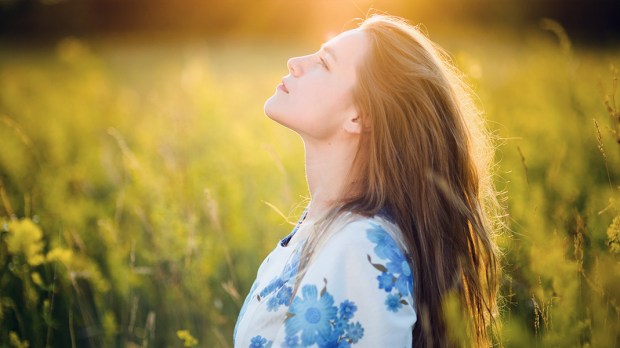Women are used to being told what to think about our bodies. Everywhere we look, some “expert” is telling us how we can be slimmer, stronger, prettier, healthier. And nothing makes us sit up and pay attention to these experts more than the approach of summer — the season of the sundress and swimsuit.
But even though wanting to look good and be healthy and strong are good things, we know that we can take these ideas too far, causing us to run ourselves (literally) ragged or develop a self-loathing toward our own imperfect bodies.

Read more:
7 Edith Stein quotes every woman should read
This, according to Christine Valters Paintner, PhD, the online Abbess at AbbeyoftheArts.com and author of The Wisdom of the Body: A Contemplative Journey to Wholeness for Women,is not how we were meant to view our bodies — or to live.
Paintner began exploring her own body issues after she was diagnosed with an autoimmune illness just after graduating from college at 21.
“This same illness had ravaged my mother’s body,” Paintner says. “It embarked me on a journey, which I still continue, of learning to love my body in all of its joys and struggles.”
What she discovered has led to work with women through spiritual direction and helping them to discover the “wholeness” that she has.
“Our culture also promotes pervasive messages over which bodies are valuable and offers us thousands of ways to spend money to improve ourselves,” Paintner says. “This criticism is of course internalized, so that we have a constant stream of judgmental thoughts running through our minds about ourselves. It is depleting on so many levels, to the body and to the heart and the spirit.”
And this is the problem so many of us face. Even as we seek to “improve” ourselves outwardly, we’re destroying ourselves inwardly. Our souls suffer for the sake of our bodies. And that’s very off, according to Paintner.

Read more:
A Fast Take on ‘The Wisdom of the Body’ with Christine Valters Paintner
“We have so externalized our perspective of our bodies,” she says. “For most of us, our approach is entirely filtered by imagining how others view our bodies, and worrying how we will be judged.”
But we can do better, Paintner suggests: “There is a huge shift when we simply move our perspective inward and ask how does my body feel right now? What would offer it rejuvenation, pleasure, rest, or nourishment? When we reclaim our own authority and open up the conversation with our bodies, we can discover an immense well of wisdom for how to move through life in ways that are gentler and kinder to ourselves.”
This process toward discovering isn’t easy. It begins, Paintner says, by being aware of times we’re too hard on ours bodies — both physically and mentally.
“It is a slow journey and process,” Paintner says. “We start by welcoming in our body’s experiences in a conscious way, making friends with the various feelings we encounter. It is much like the practice of meditation, we learn to become more mindful of our thoughts. When the self-judgment arises, we can learn to meet it with compassion instead of more judgement. We can learn to slow ourselves down and regularly check in with our bodies simply by taking three long slow deep breaths, and moving our attention inward for a minute and asking ourselves how we are in the moment. These simple acts really do help to reverse that vicious cycle and offer contemplative ways of becoming more present to our body’s wisdom.”
Learning to reject culture’s messages about our bodies and our own negative thoughts can “take a lifetime,” Paintner says. But, it is “so worth it.”
As we inch closer to swimsuit season, perhaps we should keep in mind some of Paintner’s “process-oriented rather than product-oriented” exercises she’s been teaching women for years …
Accept the invitation
“These invitations into meditation, movement, and creative expression are ways into an encounter with our bodies, which moves past our verbal, linear minds, and into the intuitive and receptive aspects of body wisdom,” Paintner says. “The goal in these is not fitness or weight loss, but more akin to prayer which is a way of cultivating relationship. The focus is on the process of discovery along the way.”
Soften the armor
“Begin,” Paintner suggests, “by just slowing down enough to listen to the body’s messages. Allow time for three long deep breaths. I find that the first step is softening — softening the physical armor that has built up over the years. But practices like working with the breath and gentle movement can make us more aware of all these places of tightness and holding. When we work gentle with the physical body, we find emotional and spiritual release as well. All things are connected.”
Ask questions and extend grace
Paintner likes to introduce people to St. Hildegard of Bingen, the 12th-century Benedictine abbess and herbal healer, and her idea of viriditas, which means “the greening power of God.” With this idea, Paintner invites people “to consider everything they do and whether it is nourishing or depleting.” This means asking ourselves, will this activity or product or procedure “bring about a sense of lush fullness” in my life?
“I regularly use this as a tool for discernment,” Paintner says. “The other key is to not revert to judgment when I do make poor choices, but to meet myself with loving kindness.”

